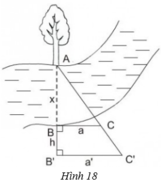Read the following passage on transport, and mark the letter A, B, C, or D on your answer sheet to indicate the correct answer to each of the questions from 43 to 50.
1) It was the first photograph that I had ever seen, and it fascinated me. I can remember holding it at every angle in order to catch the flickering light from the oil lamp on the dresser. The man in the photograph was unsmiling, but his eyes were kind. I had never met him, but I felt that I knew him. One evening when I was looking at the photograph, as I always did before I went to sleep, I noticed a shadow across the man’s thin face. I moved the photograph so that the shadow lay perfectly around his hollow cheecks. How different he looked!
(2) That night I could not sleep, thinking about the letter that I would write. First, I would tell him that I was eleven years old, and that if he had a little girl my age, she could write to me instead of him. I knew that he was a very busy man. Then I would explain to him the real purpose of my letter. I would tell him how wonderful he looked with the shadow that I had seen across his photograph, and I would most carefully suggest that he grow whiskers.
(3) Four months later when I met him at the train station near my home in Westfield, New York, he was wearing a full beard. He was so much taller than I had imagined from my tiny photograph.
(4) “Ladies and gentlemen,” he said, “I have no speech to make and no time to make it in. I appear before you that I may see you and that you may see me.” Then he picked me right up and kissed me on both cheeks. The whiskers scratched. “Do you think I look better, my little friend?” he asked me.
(5) My name is Grace Bedell, and the man in the photograph was Abraham Lincoln.
Why did the author wait until the last line to reveal the identity of the man in the photograph?
A. The author did not know it.
B. The author wanted to make the reader fell foolish.
C. The author wanted to build the interest and curiosity of the reader.
D. The author was just a little girl.









